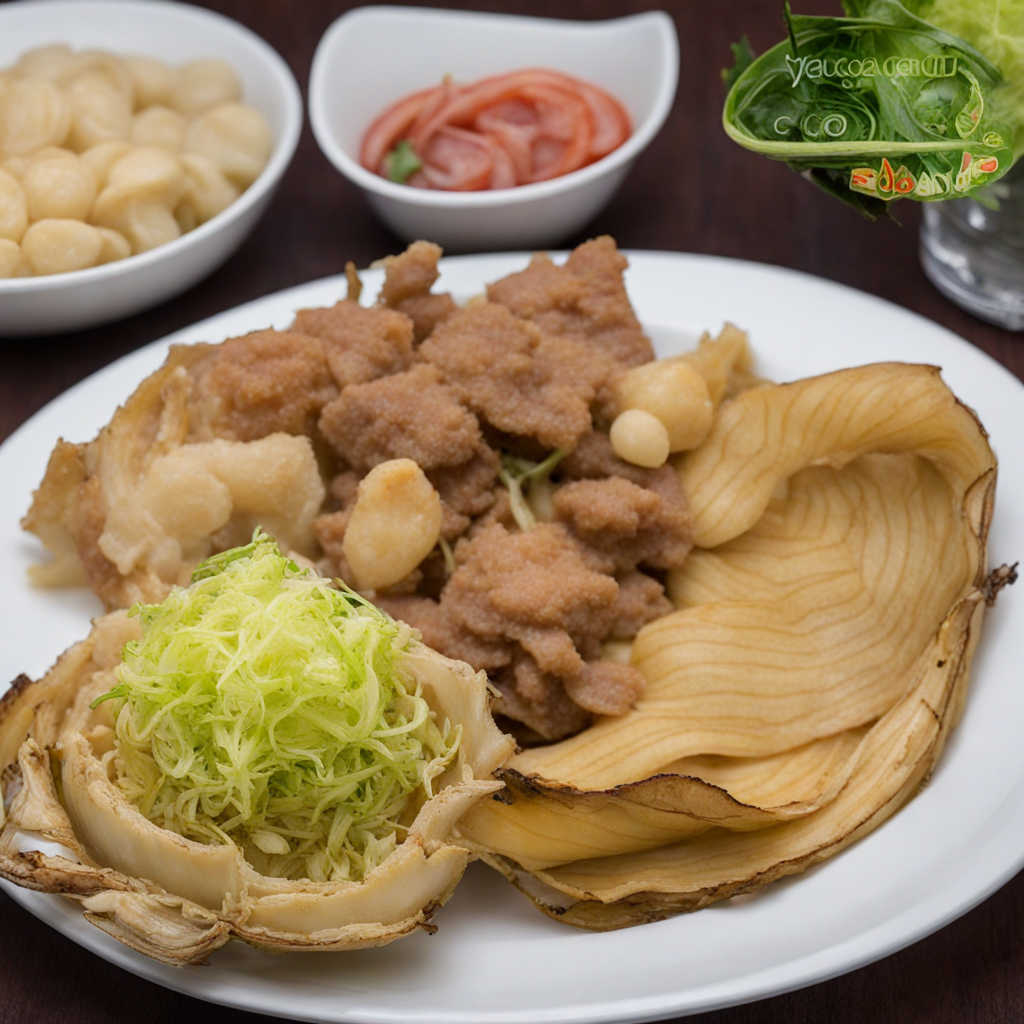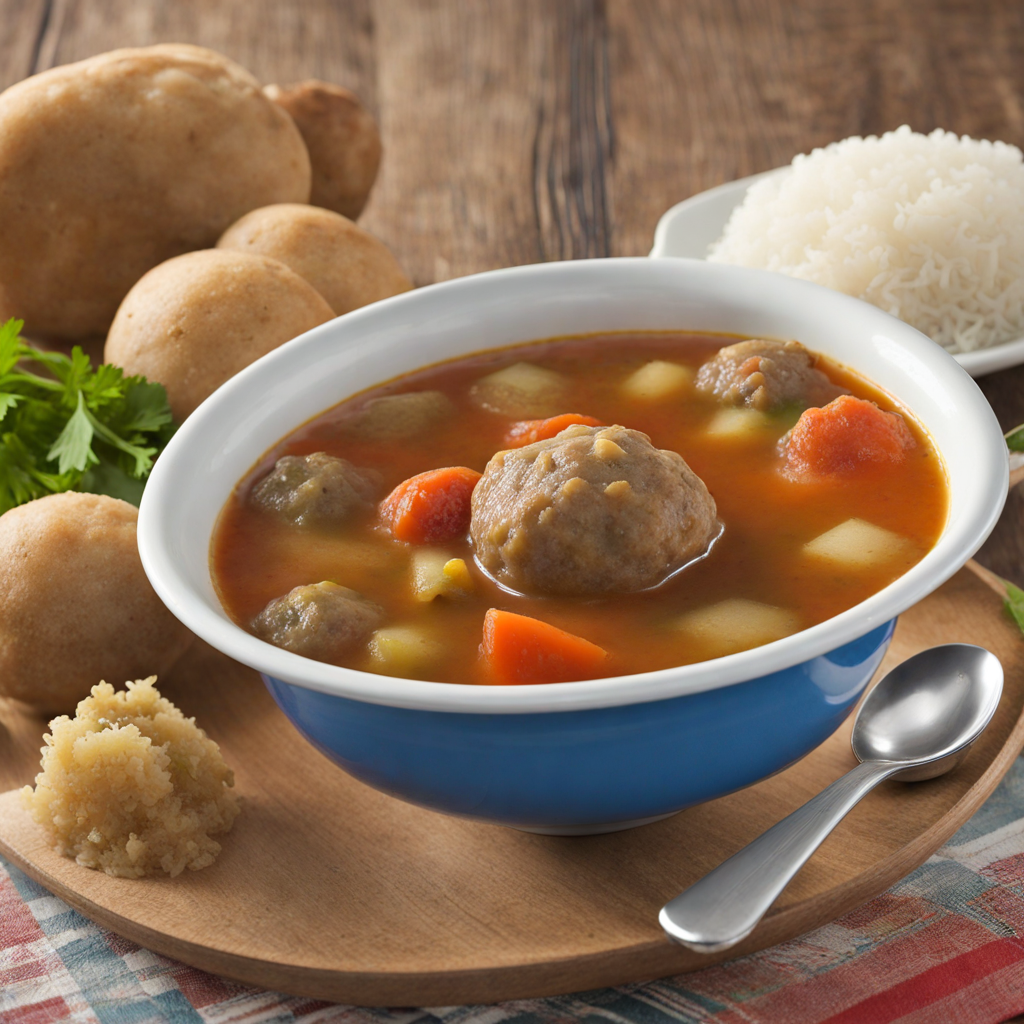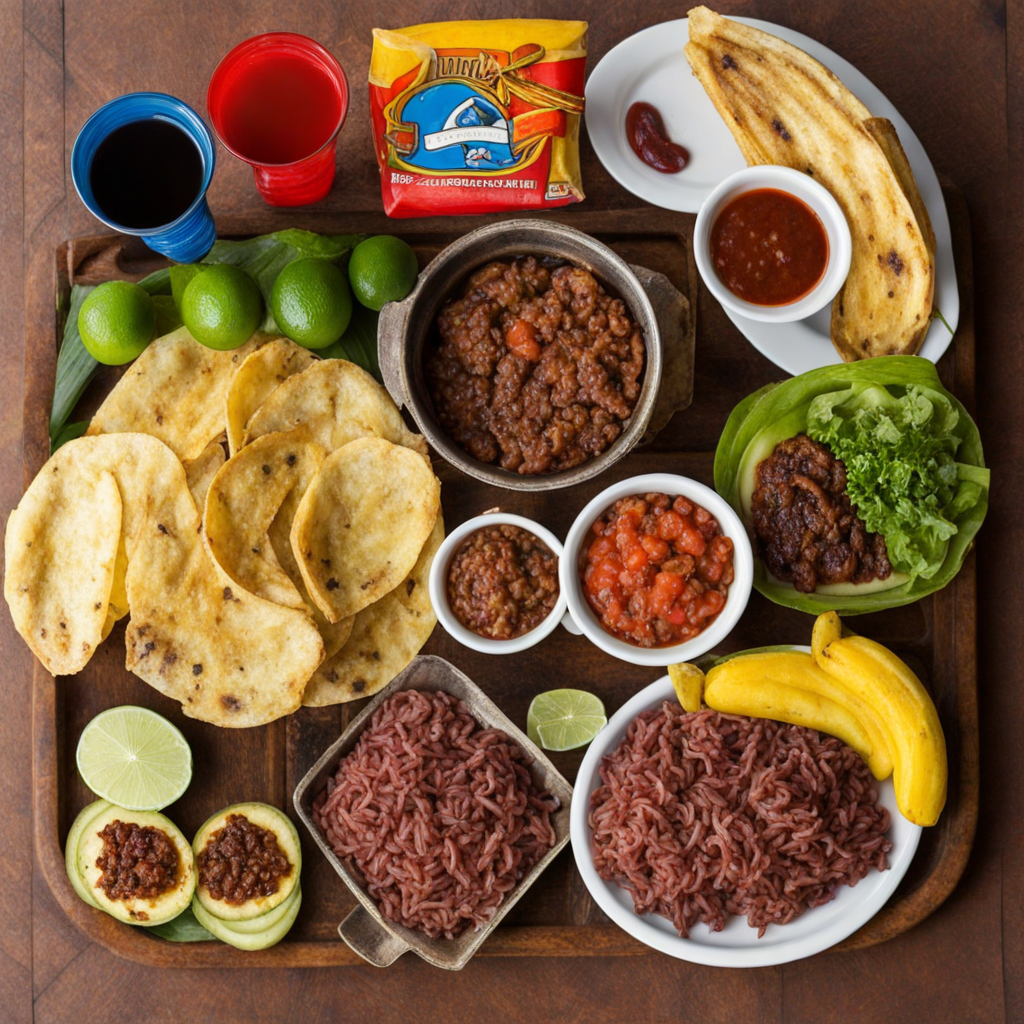Vigorón
Vigorón is a traditional Nicaraguan dish that offers a vibrant and hearty taste experience, combining fresh ingredients and bold flavors. At its core, Vigorón is a delightful mix of boiled yuca (cassava) topped with a savory slaw made from cabbage, tomatoes, and onions. This combination creates a delightful textural contrast, where the soft, starchy yuca serves as a base for the refreshing crunch of the vegetable salad. The dish is often garnished with a drizzle of vinegar and a sprinkle of salt, enhancing the natural flavors and providing a zesty kick that awakens the palate. One of the standout features of Vigorón is the addition of chicharrón, which consists of crispy, fried pork cracklings. The chicharrón adds a rich and savory element to the dish, creating a satisfying crunch that complements the softness of the yuca. This combination of textures and flavors makes Vigorón a beloved street food staple in Nicaragua, often enjoyed as a quick snack or a filling meal. The dish is traditionally served on a banana leaf, which not only adds an earthy aroma but also reflects the vibrant culture of the region. As you delve into Vigorón, you will discover the essence of Nicaraguan cuisine, marked by its use of fresh, locally sourced ingredients. The interplay of the hearty yuca, the crisp vegetable slaw, and the indulgent chicharrón creates a harmonious balance that is both satisfying and invigorating. For those seeking a new culinary adventure, Vigorón promises a delightful exploration of flavors that encapsulate the spirit of Nicaragua, making it a must-try for anyone interested in expanding their gastronomic horizons.
How It Became This Dish
Vigorón: A Culinary Legacy of Nicaragua Origins of Vigorón Vigorón is a traditional Nicaraguan dish that embodies the rich cultural tapestry of the country. Its roots can be traced back to the indigenous peoples of the region, whose culinary practices were heavily influenced by the availability of local ingredients and the agricultural cycles of Mesoamerica. The dish is primarily associated with the city of Granada, but it has transcended its geographical origins to become a beloved staple throughout Nicaragua. The foundational components of Vigorón are simple yet flavorful. At its core, it consists of yuca (cassava), which is boiled until tender, and is served with a topping of cabbage salad, often accompanied by a spicy sauce made from tomatoes and peppers. Sometimes, it is garnished with crispy pork cracklings (chicharrón), which adds a delightful crunch and richness to the dish. Yuca, a starchy tuber that is a staple in many Latin American cuisines, has been cultivated in the region for centuries, predating the arrival of Europeans. Its versatility made it an essential food source for indigenous communities. The cabbage, a later introduction from Europe, adapted well to Nicaraguan soil and became an integral part of local diets. The combination of these ingredients reflects the melding of indigenous and European culinary traditions that define much of Central American cuisine. Cultural Significance Vigorón is more than just a meal; it is a symbol of Nicaraguan identity and community. Traditionally served as street food, it is often enjoyed during festivals, family gatherings, and local celebrations. The dish represents a sense of togetherness and hospitality, as it is commonly shared among friends and family. Street vendors, known as "vigoreros," are a common sight in markets and at roadside stalls, offering this beloved dish to passersby. The act of sharing Vigorón is akin to sharing a piece of Nicaraguan culture itself, fostering connections among people. In many ways, Vigorón serves as a culinary ambassador for Nicaragua, showcasing the country's agricultural bounty and culinary heritage. The dish is emblematic of the Nicaraguan spirit—resilient, resourceful, and deeply rooted in tradition. It reflects the local philosophy of using fresh, available ingredients to create hearty and satisfying meals, a practice that has endured through generations. Development Over Time As Nicaragua's culture evolved, so too did Vigorón. The dish has undergone various adaptations while retaining its core elements. In the 20th century, as urbanization increased and people moved to cities for work, Vigorón adapted to the fast-paced lifestyle of urban dwellers. Street vendors began offering quicker versions of the dish, allowing people to enjoy it on the go. This shift contributed to the dish's popularity, making it accessible to a broader audience. The introduction of new flavors and ingredients also played a role in the evolution of Vigorón. While the classic recipe remains beloved, modern interpretations sometimes include variations such as grilled meats or seafood, reflecting Nicaragua's coastal influences. Additionally, as global culinary trends continue to influence local cuisines, some chefs experiment with fusion dishes that incorporate international flavors, elevating Vigorón to new gastronomic heights. Despite these changes, the essence of Vigorón has remained intact. It continues to be a dish that unites people, a comfort food that evokes memories of home and family gatherings. The nostalgia associated with Vigorón is palpable; for many Nicaraguans, it is a reminder of their childhood, of family meals shared under the warm sun, and of the vibrant markets where the dish is sold. Vigorón Today In contemporary Nicaragua, Vigorón has become a culinary icon, celebrated not only as a street food staple but also as a dish featured in restaurants that focus on traditional Nicaraguan cuisine. Food festivals often highlight Vigorón, showcasing its significance within the gastronomic landscape of the country. Chefs pay homage to the traditional recipes while adding their own personal touches, allowing for continued evolution while honoring the dish's origins. Furthermore, the global interest in authentic culinary experiences has led to an increased appreciation for traditional Nicaraguan dishes like Vigorón. As more people explore Nicaraguan cuisine, they discover the depth of flavors and cultural stories behind each dish. Cooking classes and food tours focused on traditional recipes have emerged, offering visitors a chance to engage with local culture through food. The rise of social media has also played a pivotal role in promoting Vigorón beyond Nicaragua's borders. Food bloggers and influencers share their experiences with the dish, bringing attention to its unique flavors and cultural significance. This exposure has not only contributed to a renewed interest in Nicaraguan cuisine but has also created a sense of pride among Nicaraguans, both at home and in the diaspora. Conclusion Vigorón is more than just a dish; it is a narrative woven into the fabric of Nicaraguan culture. From its humble beginnings as a sustenance food for indigenous peoples to its status as a beloved street food and culinary emblem, Vigorón reflects the resilience and adaptability of Nicaraguan cuisine. Its ability to evolve while maintaining its core elements speaks to the broader themes of cultural identity, community, and tradition. As Nicaragua continues to navigate the complexities of modern life, Vigorón remains a steadfast representation of the nation's culinary heritage, inviting all who encounter it to savor the flavors of Nicaragua's past, present, and future.
You may like
Discover local flavors from Nicaragua







